Bacchus Marsh Heritage Trail

First settled in 1836 during the Ballarat gold rush, Bacchus Marsh has a rich history of farming, transport, rail technology and geological significance. Many historic buildings remain in place and visitors and history buffs are sure to enjoy the many stories on offer along the Bacchus Marsh Heritage Trail.
The township of Bacchus Marsh is situated in the valley of the Werribee and Lerderderg Rivers, an area renowned for its fertility and geological significance. Kenneth Scobie Clarke was the first white settler in the valley, arriving in December 1836, settling on the banks of the Lerderderg River on land now owned by the Bacchus Marsh Golf Club. In 1838, Clarke moved to the Pentland Hills, leaving the valley to Captain William Henry Bacchus.
Highlights include the Avenue of Honour which commemorates those who served in World War 1, the Bacchus Marsh Courthouse established 1858, a Railway Turntable mid-1950s, and Station built in 1887 and The Chicory Kiln, built in 1885 to dry, grind and roast local chicory to sell in 'Dr Morse's Indian Root Pills.'
Download a copy of the Bacchus Marsh Heritage Trail or drop in to the Bacchus Marsh Visitor Information Centre, 215 Main Street, Bacchus Marsh.
Follow the Heritage trail for an insight into the town's history.
1. The Avenue of Honour (1918)
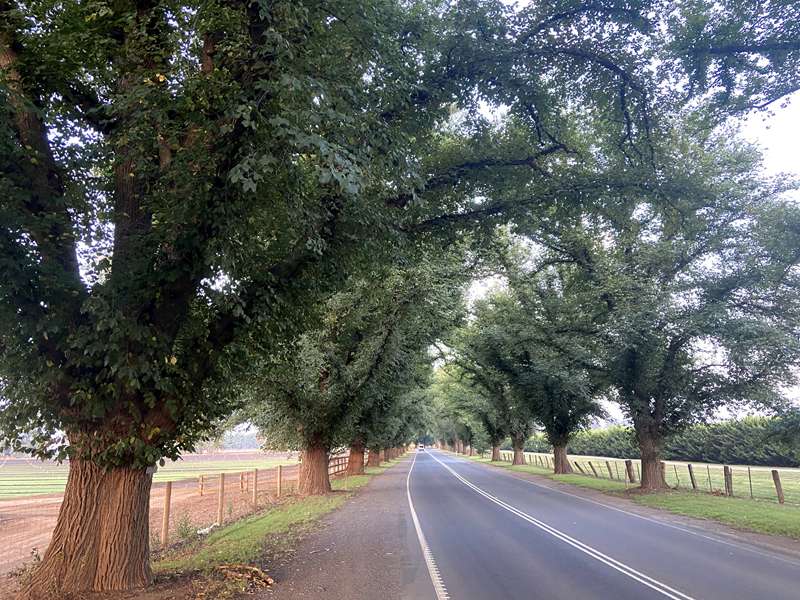
The avenue of elm trees serves as a tribute to local people who enlisted in the First World War. The original 281 trees were simultaneously planted on the call of a bugle on 10 August 1918 and numbered in alphabetical order.
The Avenue is significant - it is long, intact and is internationally recognised as a "Living Memorial". Worldwide, elm avenues are at risk from disease, or already lost! Bacchus Marsh is ensuring the Avenue's longevity - from basic tree maintenance to tree cloning programs and staged replanting. Take a stroll down the Avenue and experience its majestic canopy.
2. Bills' Horse Trough, 200 Main Street
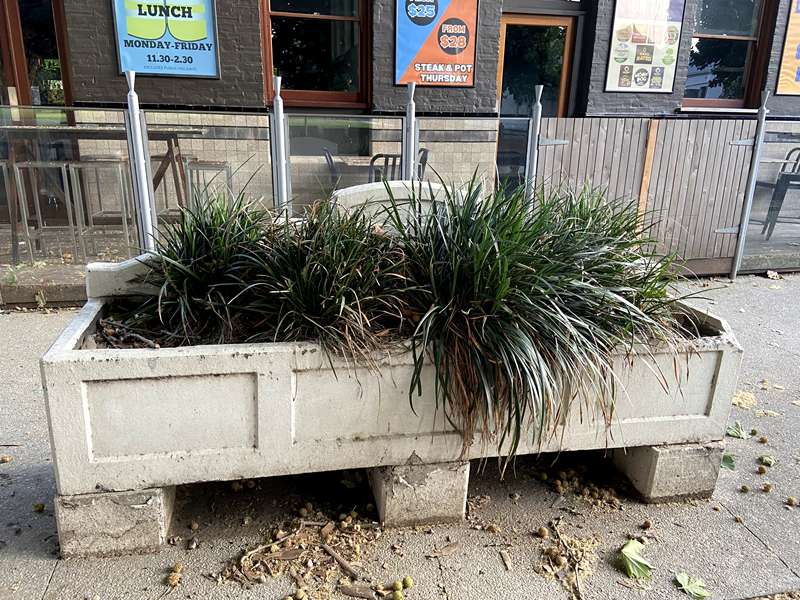
The trough, outside the Royal Hotel, was donated by the Estate of Annis and George Bills. The estate was to "... construct, erect and pay for horse troughs wherever they may be needed ... for the relief of horses and other dumb animals".
3. Memorial to South African Volunteers, 156 Main Street
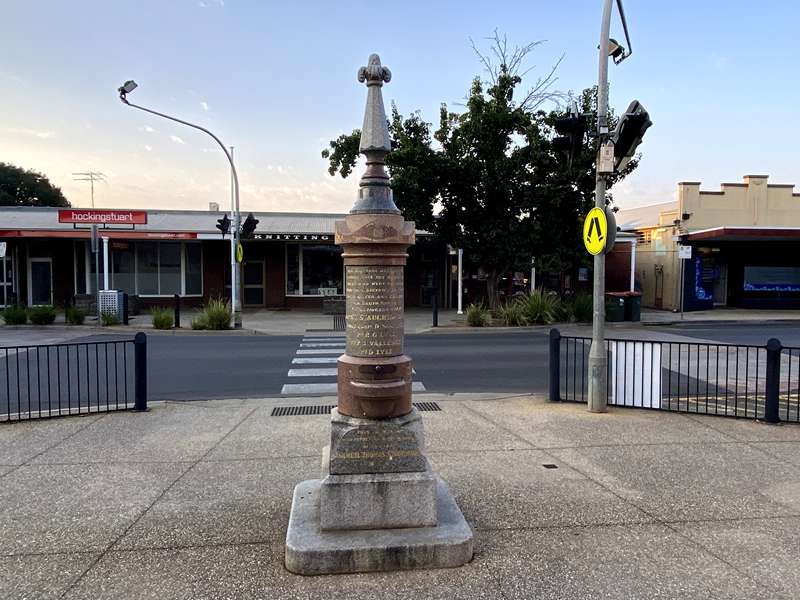
The granite fountain lists local members of the Victorian Mounted Rifles who were "...selected to serve their Queen and country in South Africa", in the Boer War of 1899-1902.
4. ANA Building, 154 Main Street
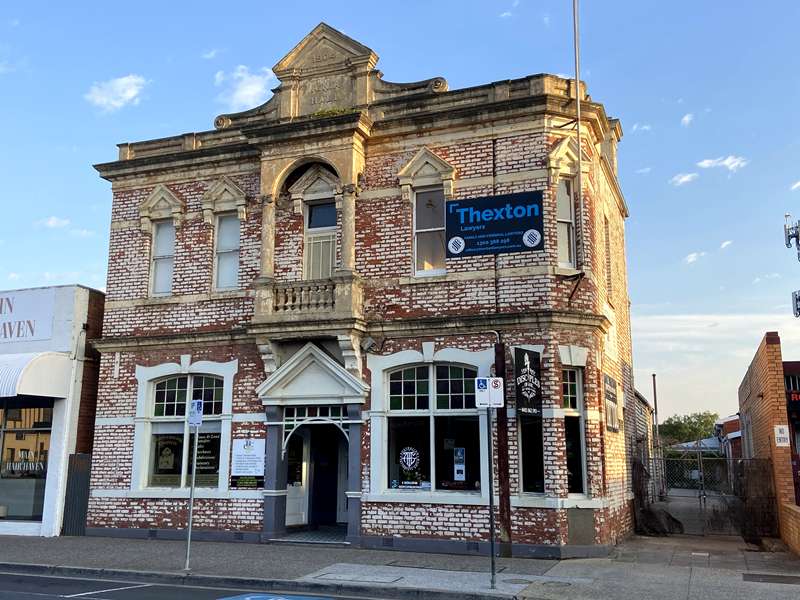
The Australian Natives Association ran sports meetings, provided reading rooms and billiard tables - in order to "keep young blokes off the streets". In 1904 the brick facade was added. At the end of the winter of 1931, a blackboard on a small easel ....(read).... "Billiards Final - ANA v Royal Oak - Friday night" (Legends from Benson's Valley, Frank Hardy 1963).
5. Border Inn (1851) (Flanagan's Hotel), 139 Main Street
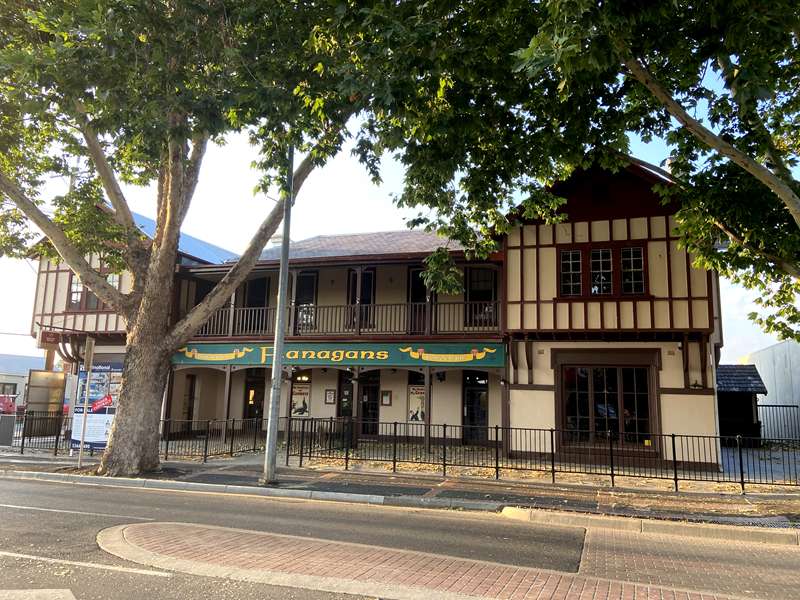
Opened in 1851, the original licensee, James Watt and James E. Crook, Woolpack Inn (1843), have been credited with providing the first coach services in Victoria (6 Oct 1851). The Border Inn was an overnight stop during the Gold Rush for Cobb & Co. Coaches.
6. Bacchus Marsh Courthouse (1858), 123 Main Street
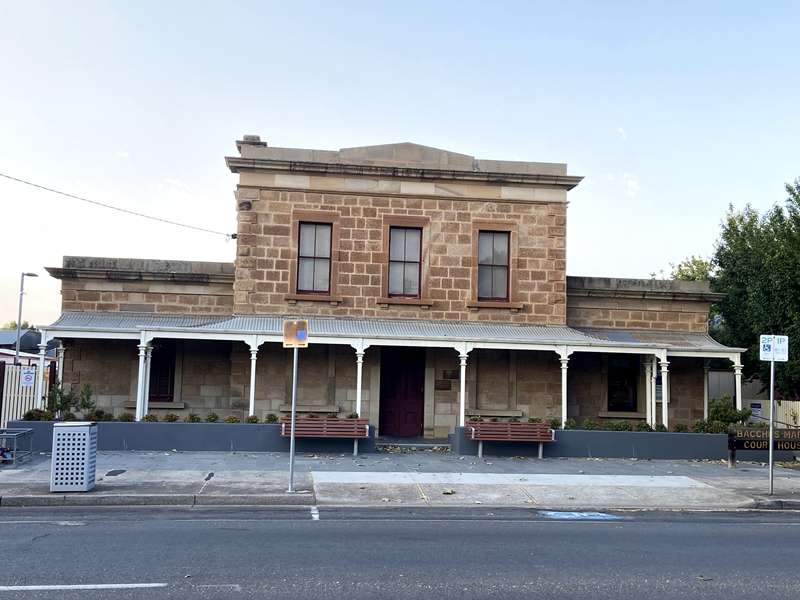
Built in 1858 of sandstone and used for trials by jury. At one period it was a Crown Land Sales office. Currently used as a Magistrate's Court.
7. Police Cells & Residence, 119 Main Street
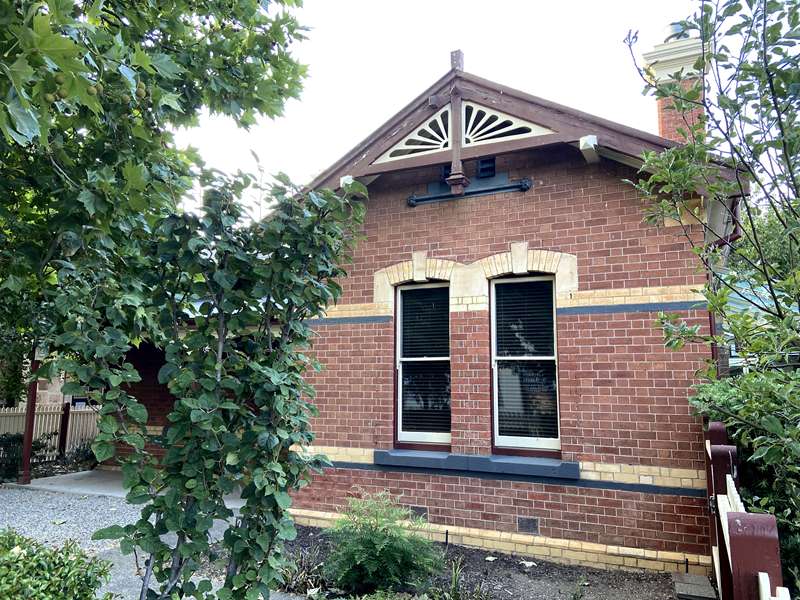
The cells were relocated here from the Police Paddocks in Maddingley. There is speculation that 13 prisoners taken to Melbourne for trial some months after the Eureka uprising at Ballarat, had lunch in the sandstone cell while it was at Maddingley. The residence built in 1890 features fine decorative details, rail and finial on the table end with a fret work chrysanthemum motif.
8. Simon's Garage (and Peter Carey), 4-6 Grant Street
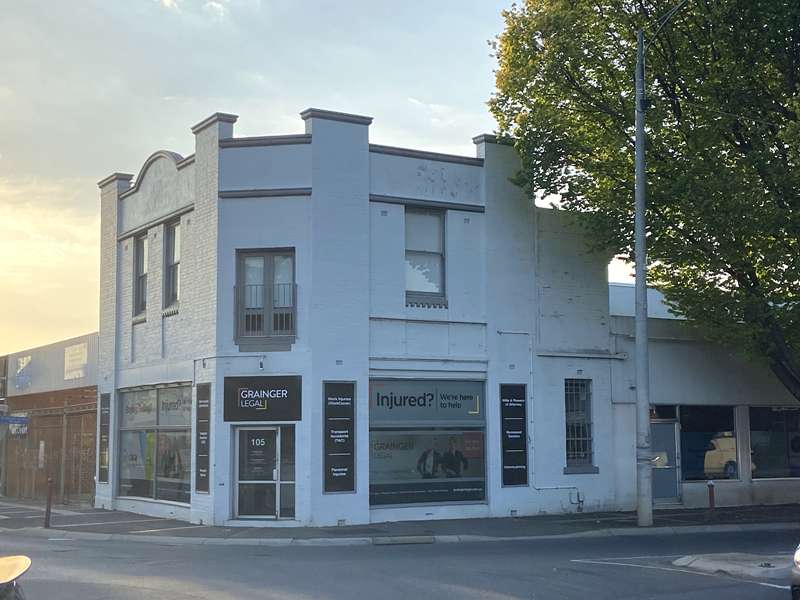
Simon's Garage (now BM Print & Copy) was the site of the first motor garage in country Victoria & built Monarch motorcycles and bicycles. In 1948, PS Carey bought the business; it was in the upstairs apartment that author Peter Carey lived as s child.
9. Lone Pine Memorial, 29-35 Grant Street
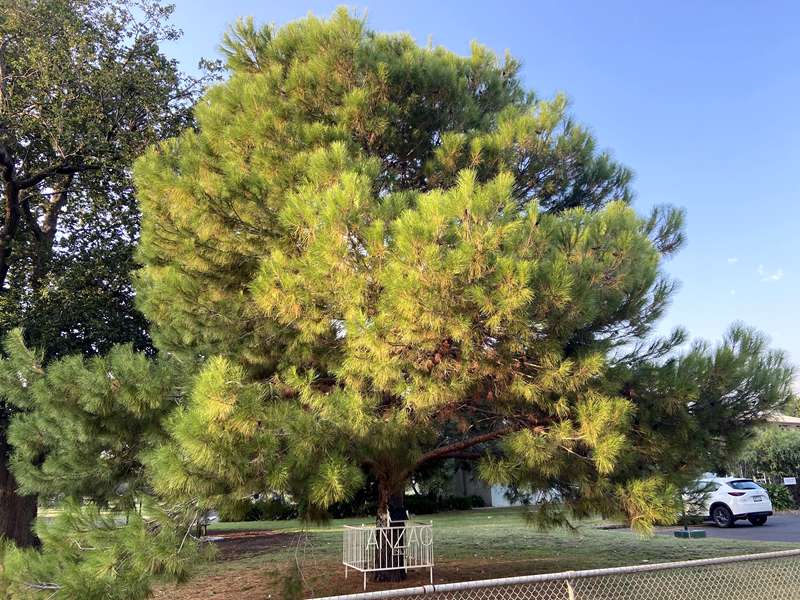
An Aleppo Pine, descendant of a tree from the WW1 Lone Pine battlefield at Gallipoli, Turkey, is in the grounds of the Bacchus Marsh and Melton Memorial Hospital.
10. Court House Hotel (1864), 116 Main Street
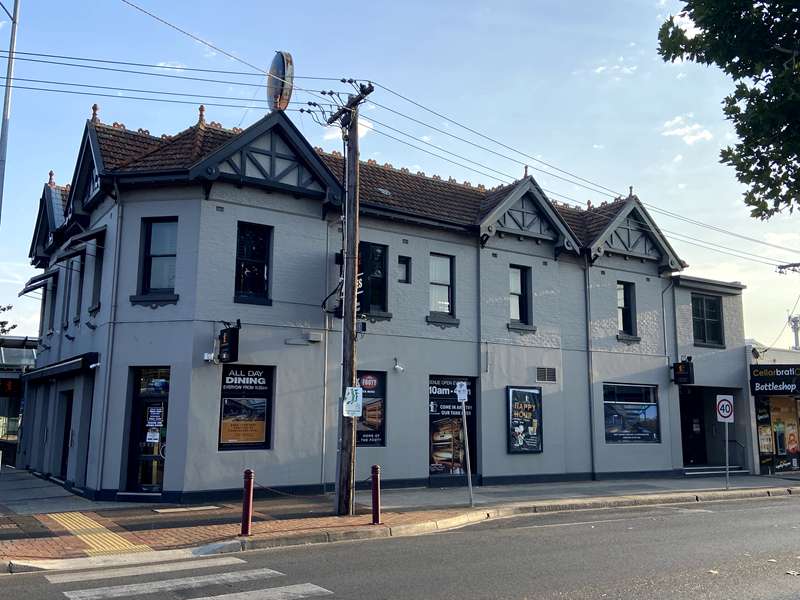
This 1911 building replaced the original single storey hotel operating since 1864, which began as a saddler in 1857. "... begs to inform up-country Friends that he still continues to keep his usual supply of first class Liquors, and that his usual courteous style will be exercised towards them. ...Stabling - is first class with good attendance and a plentiful supply of superior hay and oats." - Bacchus Marsh Express, 25 July, 1866.
11. The Express Office, Printing Works (1866). 8 Gisborne Road
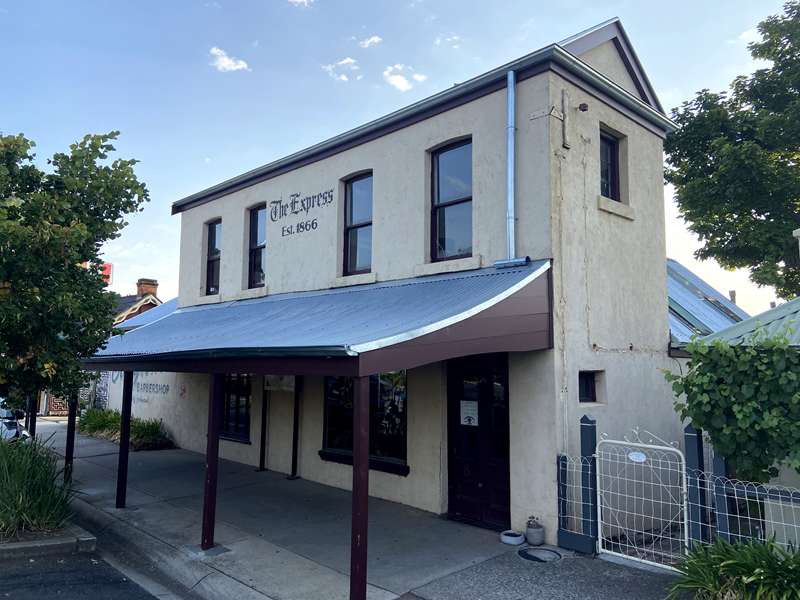
The Express Newspaper continued operation for 117 years, owned by the Crisp family until 1970 and is a comprehensive record of the history of the Bacchus Marsh district. Buildings contain a collection of early printing technology.
12. St. Andrew's Uniting Church (1865), 12 Gisborne Road
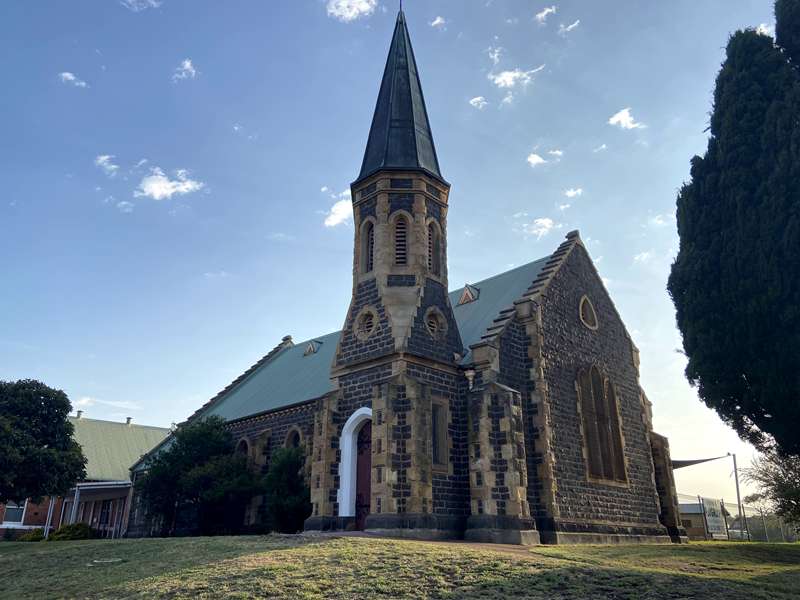
Opened in 1865, originally a Presbyterian Church, this is the oldest of the three churches in Bacchus Marsh. The red brick hall built in 1912 was used as classrooms to Bacchus Marsh High School 1921-1923.
13. Holy Trinity Anglican Church (1877), 19 Gisborne Road
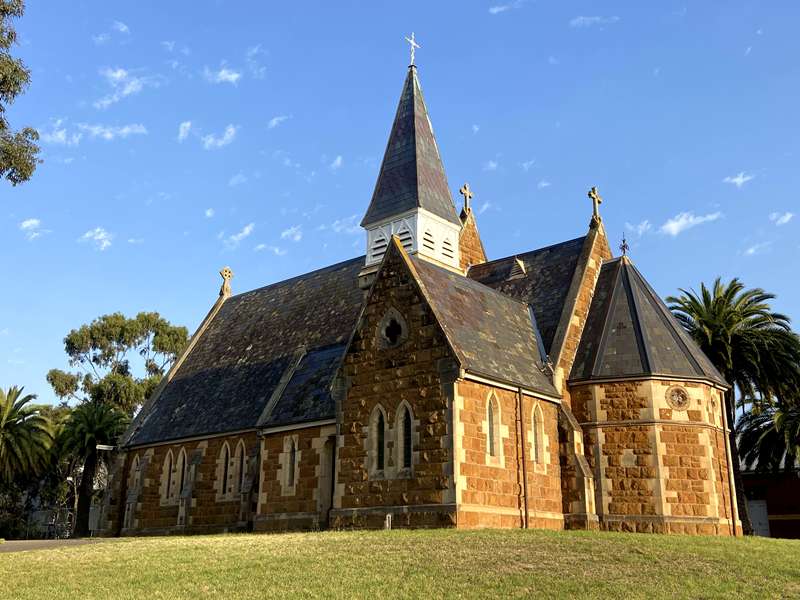
Contains the gravesite of Captain William Henry Bacchus. It was in the old iron church that Andrew George Scott was lay preacher; later to become the notorious bush ranger, Captain Moonlite.
14. St. Bernard's School and Convent of St. Joseph (1900), Gisborne Road
The town's first Catholic school started at Hopetoun Chapel in 1851. The Sisters of St. Joseph, an order of nuns founded by Saint Mary of the Cross (Mary Mackillop) took charge of the school and brick convent, built in 1900 with classrooms downstairs, dormitories for the Sisters and boarders upstairs. The Chapel Museum at the Convent contains memorabilia and is open by arrangement.
Phone: 0407 671 954.
15. Blacksmith's Shop and Cottage (1851), 100 Main Street
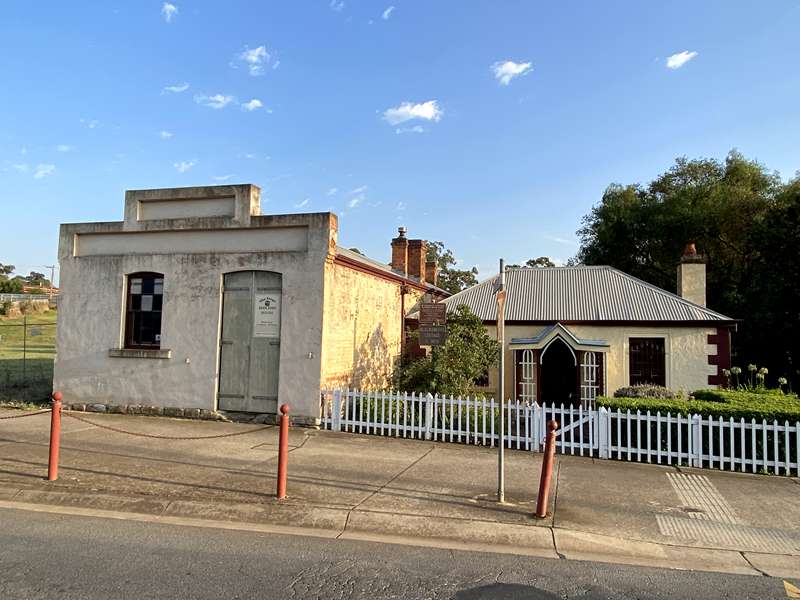
Blacksmith, Vere Quaile, built the stone cottage, an orchard & fenced garden about 1851. Cottage is open for visitors monthly. Blacksmith's Forge was built in 1877 by Hugh Meikle, recognised as the town's foremost blacksmith. The 'smithy closed in 1961; now operating as the Forge BookBarn.
16. Maddingley Park (1860s), Grant Street, nr. Railway Station
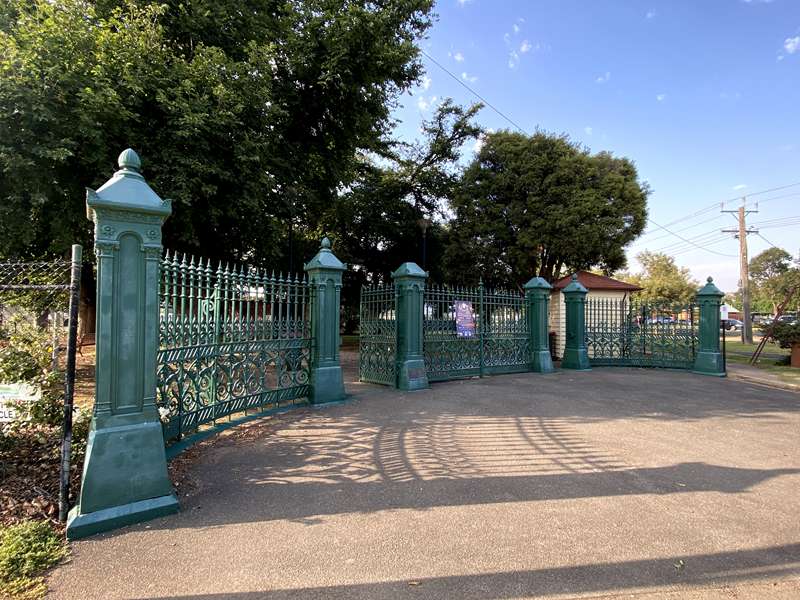
Large shady trees, historic pavilion, bandstand, modern children's playground, football oval & tennis courts make this a pleasant recreational and picnic location. The park once had a cable tram, large fountain, a sundial, an artificial lake, boathouse, bridge and cannon.
17. Railway Turntable and Station (1887), Station Street
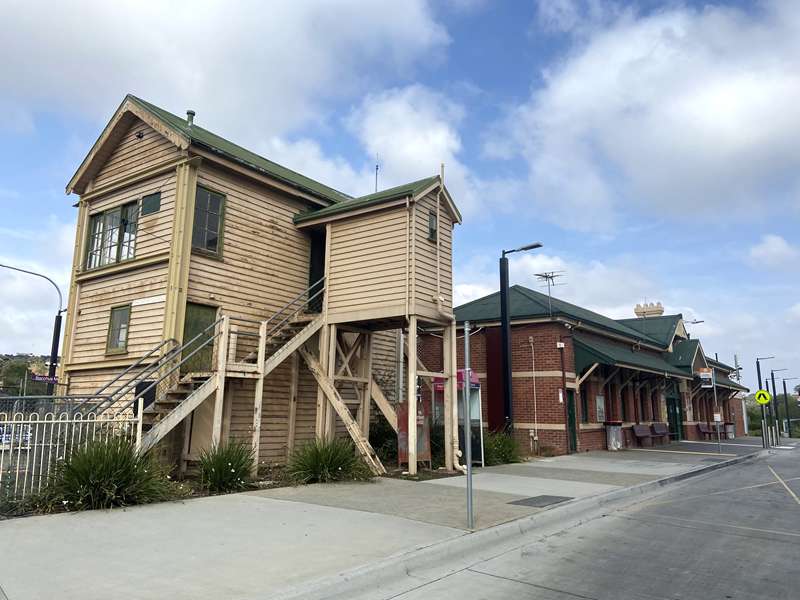
Bacchus Marsh railway yards boast an 1887 operational turntable. Engines still use it to turn around when steam rail excursions visit. The "Marsh' has been a popular day excursion by rail since 1887.
For more photo opportunities, take a walk to:
The Chicory Kiln (1885), Taverner Street
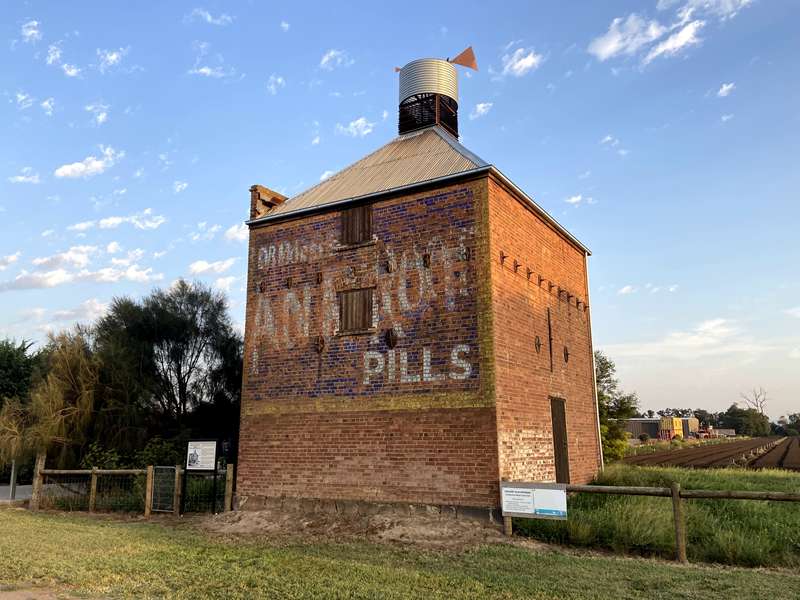
The square multi-storey kiln enabled drying the green chicory grown locally from 1876-1892. Chicory (endive) with a turnip-like root was ground, roasted and used as an additive or substitute for coffee and as a dye for cloth. The advertising promotes "Dr. Morse's Indian Root Pills" - a treatment for kidney ailments.
The Manor House, 28 Manor Street
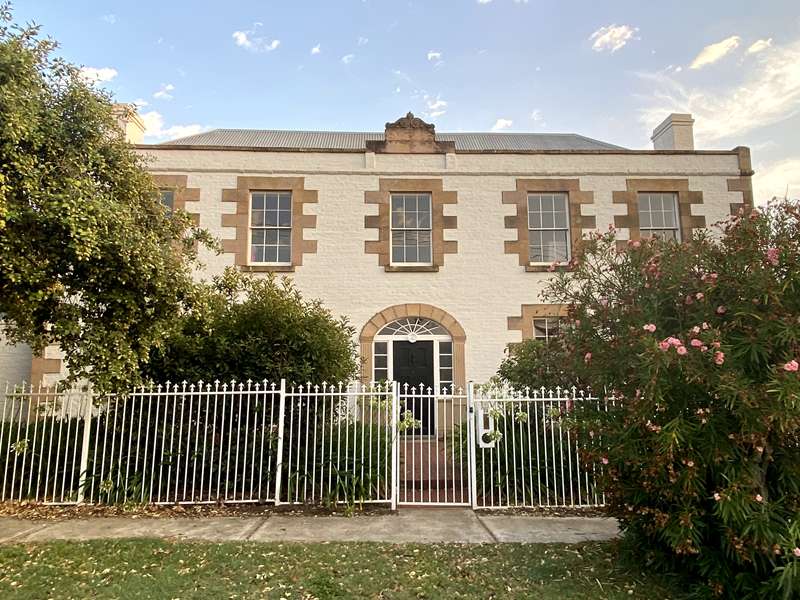
Built by Captain William Henry Bacchus from sandstone quarried at Matson's Quarry on Bald Hill which overlooks Bacchus Marsh. The site was used as a Court House and police barracks (c.1852) for three years. The Manor House is listed on the National Estate Register and remains a private home.
A Brief History of the Historic Sites
The township of Bacchus Marsh is situated in the valley between the Werribee and Lerderderg Rivers, a picturesque area renowned for its scenic beauty, rimed mountains and the geologically famous Werribee (glacial) and Lerderderg (river).
Gorges The valley was once a marsh, as the name suggests, with the rivers meandering their way across the flats, linking one billabong with another. However, the early settlers were able to drain the area satisfactorily and the course of the Werribee was altered slightly. Often described as the most fertile valley in the world, the lush growth seen in the orchards, market gardens, arid surrounding countryside proves this statement.
Kenneth Scoble Clarke was the first white settler in the valley as manager of the Great Lake Coy, of Van Dieman's Land. He arrived in the district in December 1836. It is understood he was responsible for the first shearing to take place near Melbourne. After his arrival from Georgetown, Tasmania, he camped on the banks of the Saltwater River. Here his sheep were shorn before setting forth on his journey westward. He settled in a hut on the banks of the Lerderderg River on land now owned by the Bacchus Marsh Golf Club. In 1838, Clarke moved to the Pentland Hills where he had established out-stations and vacated the valley and all lands east of the Korkuperrimul Creek to Captain William Henry Bacchus and his son of the same name. When informing his employers of the arrangement, Clark gave the locality the name of Bacchus's Marsh. During the succeeding years it became known as Bacchus Marsh.
The actual township of Bacchus Marsh was never meant to be, as the first surveys were for the villages of Maddingley on the south bank of the Werribee River and Darley on the south bank of the Lerderderg River, but the numerous hostelries and accompanying business houses were erected on the most direct route though the valley.
The sandstone. Djerriwarrh Bridge [old road alignment] which was built in 1858/59 has been restored by the Country Roads Board (Vic. Rods) and classified "B" by the National Trust. The Djerriwarrh Creek marks the division between Bacchus Marsh (Moorabool) and Melton Shires.
Recently claimed, the first Roman Catholic Cemetery in the Diocese of Melbourne has been left untouched by the Bacchus Marsh by-pass. The cemetery also marks the sites of the first Roman Catholic Church and school built in the area In 1850. The Bacchus Marsh and District Historical Society has erected a post and rail fence around the cemetery. The cemetery was donated for these purposes by John Leahy whose home, "Springfield", later "Farmer's Arms" hotel, may be seen set hack from the load opposite the cemetery. It is a single storey residence on a small hill and it has been classified by the National Trust. A more recent name was Symington's Brewery.
The Chicory Kiln was erected in 1885 for Mr. T. G. Pearce who was the pioneer of Irrigation In the district.
The Osaga Orange trees in Taverner Street have formed a unique and interesting area. The trees were planted in the 1860s.
The Express Office. The "Express" was founded In 1866 but the exact age of the building is not known. The original press appears to have been placed in position and the building erected around it. The original portion of the office was constructed with hand-made bricks. The front doors came from Leahy's Hotel at Hopetoun. The paper was conducted by Christopher Crisp and George Lane and their residences still stand on either side of the office.
Of the five denominations represented not one church remains on the original site. The first Presbyterian Church [now Uniting Church] was erected on the site of 277 Main Street in 1853, the present building being opened in 1865. It was an impressive bluestone and sandstone structure built by J. Cuthbertson and W. Watson assisted by J. Wightman, Stonemason of Coimadal. Opposite to the Presbyterian Church is the Holy Trinity Church of England. Near this site the first selected Anglican Church services were conducted In 1895 in the "old Iron church". This edifice was brick lined and served its purpose for some 20 years before the present building was erected. It was in the old iron church that Andrew George Scott, lay preacher and reader conducted his services. He later became notorious for his bush ranging escapades as Captain Moonlite. Holy Trinity, constructed of sandstone and opened in 1877, was designed by Melbourne architect Frederick Wyatt. The large St. Bernard's Catholic Church was erected In 1874 and designed by H. R. Cassell of Ballarat.
Primary School No. 28 was erected in 1864 with additions to the original building made in 1874.
The Manor House, a two-storey stone and brick house was built circa 1846 for Captain William Henry Bacchus. Born in 1782, Bacchus served in the Napoleonic Wars and sailed for Australia in 1837. He and his family, a son and daughter, landed in Sydney. After bringing sheep from Tasmania, Captain Bacchus and his son came to Bacchus Marsh in 1838. Captain Bacchus died in 1849 at the age of 67 and was buried on his own land at his express wish. His grave was restored by the Bacchus Marsh & District Historical Society in 1872. His son donated the land surrounding the Church of England for church purposes at a later date. The Manor House has been restored by Mr. and Mrs. P. S. Malcolm and is classified "A" by the National Trust. Two years after the death of Captain Bacchus, his son sold the property in 1851.
The Buffaloes' Hall, Young Street, is one of the first country Mechanics institutes to be erected in Victoria (demolished for the Village Shopping Centre car park).
The Stone Villa, Bennett Street, was built of freestone (circa 1865) as a private residence for Mr. James Young. Later it became a private school and in 1883 was bought by the Church of England and used as a vicarage for about 40 years. It has been classified by the National Trust.
The Royal Hotel, Cnr. Young and Main Streets, was built in 1870 and has been added to over the years.
Harvest Home Hotel, Main Street (opposite Lord Street) licensed as beer shop in 1856 and operated for at least 46 years as a hotel before becoming a private residence. It has been demolished for Crawfords' undertaking business.
Maddingley Park, popular for many years for large picnics is set in 28 acres adjoining the Railway Station. The artificial lake and aquarium once boasted about have gone, however the large shady trees and peaceful atmosphere is still a haven enjoyed by all. The park was formerly the police paddocks before the police were moved to Main Street in 1868. The area was altered in 1872 and leased for 10 year for grazing. The tenant agreed to erect a three rail fence, entrance gates and side entrances to allow public access and for the trustees to plant trees. In 1884 the area was to be known as Maddingley Park and no long as Maddingley Recreation Reserve. In 1888 the main structure was established and the area became popular with railway travellers after the advent of the railway in 1838.
Maddingley Park Gates were purchased in February 1922 by the Australian Native's Association as a war memorial for 220 pounds from Lambassa (Lambassa House), Caulfield, which is classified by the National Trust. The gates were made in Scotland for 800 pounds - weight 8 tons, foundations 8 tons of concrete blocks.
Maddingley Court House was erected in the early 1850s in the area known as the police paddock. The local Roads Board bought the building for 100 pounds after the completion of the new Bacchus Marsh Court House. The building was never used by the Roads Board; became a curator's residence and is now the Tennis Club House.
In the main part of the town, Anderson's General Stores was built in 1866 as one of the few bluestone buildings in Bacchus Marsh and was built by James Young who sold it in 1869 to Anderson and Co. Members of this family carried on the store until 1970 (site where Fergusson Plarre is situated).
The Baptist Church, erected in 1868 was moved to its present site from Lerderderg Street in 1898 when a new front was added to the building. This church has been demolished for the construction of the car park for the Foodworks supermarket complex off Main Street.
The Border Inn opened in 1850 and has been altered on many occasions. The founder James Watt, along with James Crook, founder of the Woolpack Inn (Cnr. Woolpack Road), have been accredited with the first coach services in Victoria in the "Lights of Cobb & Co." by J. A. Westin. It is mentioned that Watt and Crook ran their coaching service to the Ballarat Gold Diggins in 1851. They charged 25 shillings for a trip from Bacchus Marsh to Melbourne or Ballarat with an overnight stop in Bacchus Marsh.
An interesting group of buildings in the main part of town are the National Bank (now Accountant), Court House, Police Lockup and Stables (at rear of Police Station) constructed of local sandstone. The Court House erected In 1858 and classified by the National Trust was built for trial by jury. The cedar fittings throughout are in excellent condition and the external facade has been restored by the Police Works Department. Likewise, the National Bank which was erected in 1865 had extensions added in 1904. The Police cells are thought to have been moved from the old police paddock at Maddingley in 1860.
In the Main Street is the Blacksmith's Forge, built in 1877 by Hugh Melkle. The adjoining cottage (circa 1850) was built by Vere Qualle. The complex was owned by the Edwards family from 1922 until purchased by Bacchus Marsh Shire Council with a grant from the National Estate in 1976. The complex has been classified by the National Trust and has been restored by the Bacchus Marsh & District Historical Society.
"Milbank" is the name given by William Grant, a Scottish pioneer, to this substantial home built in 1955 adjoining the southern boundary of the local Hospital - Djerriwarrh Health Services - In Grant Street and has been classified by the National Trust.
Perhaps the most striking and renowned feature of the town is The Avenue Of Honour planted in August 1918. 281 North American elms formed the avenue and linked with another avenue planted in 1884 in the main shopping area. English oaks, Chichester elms and Oriental Plane trees comprised the 40 trees on either side of Main Street. The gigantic trees have reached greater proportions than those grown in their native habitat, however, constant pruning to clear overhead wires and digging of the root systems is taking its toll.
Source: Partly from the Bacchus Marsh Historical Society
Photos:
Location
Main Street, Bacchus Marsh 3340 View Map
Web Links
→ Bacchus Marsh Heritage Trail Brochure (PDF)
→ Blacksmiths Cottage and Forge Bookbarn








